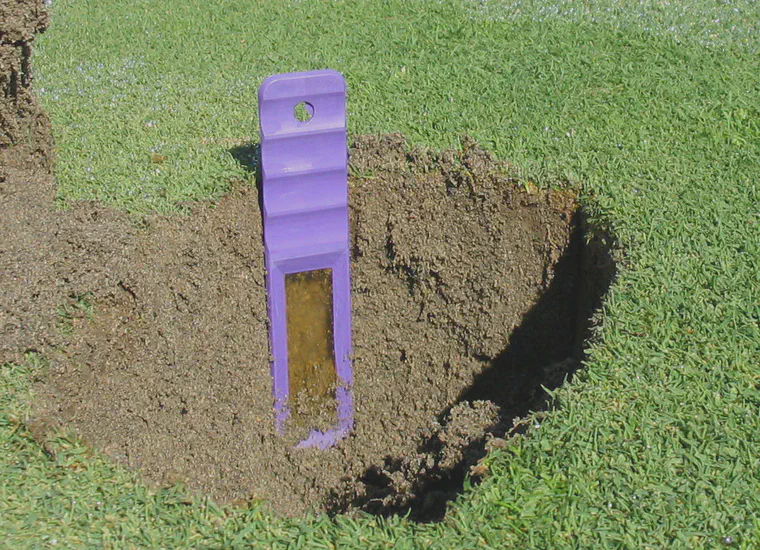What’s the most accurate way to measure available nutrients in the soil?

Have you seen this picture before? I used this photo in an announcement for turf science seminars I gave in Japan, and a golf course superintendent asked me what is shown in the photo.
This is a cation exchange membrane in general, and is specifically a PRS (Plant Root Simulator) probe from Western Ag. In my research at Cornell University, I used these exchange membranes to measure potassium flux in the soil.

The results of those experiments were summarized in this article: Potassium supply rate as measured by exchange membranes in a calcareous sand.
Exchange membranes are quite sensitive to changes in nutrient supply, and one could make a strong case for exchange membranes being a more accurate way to measure the really available nutrients in the soil compared with conventional soil testing techniques.
Potassium supply to the roots, for instance, is affected by the activity of K+ in soil solution, leaching, soil temperature, soil water content, root uptake of K+, release of K+ from mineral forms in the soil, and other contributing factors. Exchange membranes, by measuring the nutrient flux over time, are able to capture much of the true variability in nutrient supply, similar to what grass roots would experience.
In our experiment, we found that the very sensitivity and accuracy of the exchange membranes makes them less practically useful than a conventional soil test in predicting whether potassium fertilizer should be applied or not. To summarize the results of our experiments with cation exchange membranes, we found that:
- Potassium supply increases when potassium fertilizer is applied.
- The effects of potassium fertilizer can be long-lasting, even in a sand with low CEC (1.2 cmolc kg-1). We detected increases in potassium supply rate six months after an application had been made. I think most people would expect the potassium to leach or otherwise have no effect on supply rate six months after application in a low CEC sand.
- Potassium supply rate can be sufficient to meet plant requirements in many sands because of potassium release from mineral forms in the soil.